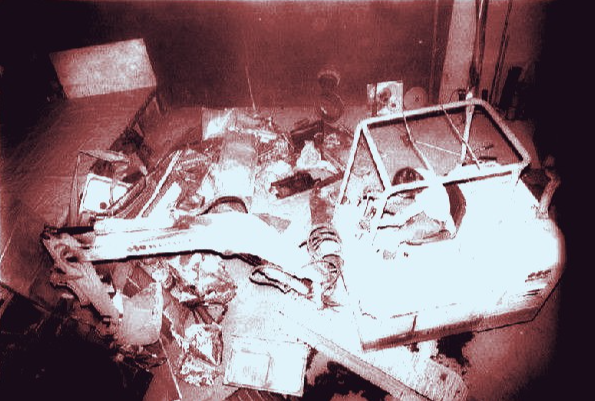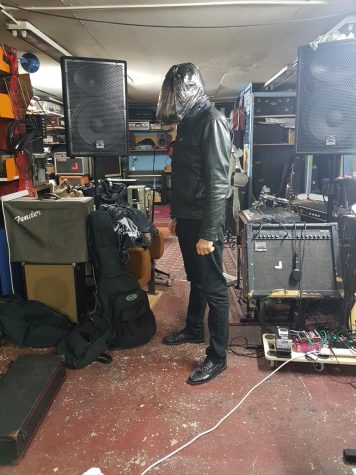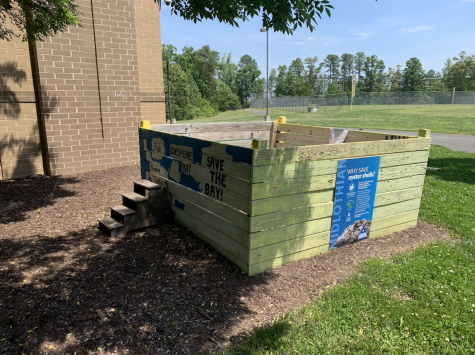Noise music: a unique and evolving art form

Hanatarash, a Japanese noise band, runs a bulldozer through their venue.
One hundred and ten years ago, Luigi Russolo, the Italian futurist, became the very first noise musician with his album “Risveglio De Una Città. (Awakening of a City)”. This marked the beginning of what is now a global underground collective of noise musicians.
Originally, noise began as part of the dada art movement, which focused on rejecting logic, reason and aestheticism. Since its inception, noise has served as a somewhat unspoken contributor to countless genres of music. Noise has changed the way electronic music is created; not only did it alter the course of both the dadaist and futurist movements, it also invented the concept of looping in music.
Musician Romain Perrot, better known as Vomir, has spearheaded the harsh noise wall movement since 1996. Vomir is one of the most well known noise musicians, having amassed a cult following over the course of his 26 year career.

“The beauty of noise is my well-being when I listen to it,” Vomir said. “I never felt any violence or pain in noise. It is a much more sentimental journey, a relief, a blast for sure, but not violence.”
Vomir does not see an end to noise, and believes the scene shows no signs of dying.
“It started more than a century ago with the futurists,” Vomir said. “So I guess the noise scene will never cease. Noise has been used more in popular music these past years, but the DIY community will always prevail.”
Despite being deeply connected to punk and absurdism, Vomir believes that the prominent philosophy within noise is freedom.
“Noise has this particularity that you can paste any concept or idea or philosophy into it,” Vomir said. “Noise is freedom by essence, so I guess the prominent [philosophy]. Free to be absurd, nihilist, punk and much more.”
One of the most notorious aspects of Vomir is his iconic trash-bag-on-head look while performing live. He uses this as a way to metaphorically disappear from the stage, allowing his audience to envelop themselves in the noise.
“It has become a signature and I am very proud of it,” Vomir said. “Masked faces come from a lot of backgrounds, art [and] fetishism. I made mine a trash bag with a performance attached to it, the static noise and me not moving an inch.”
Musician Leo Coogan, also known as fm’latghor, is a local noise artist. Relatively new to the scene, noise has provided Coogan an outlet for self expression.
“Being raw, genuine and never trying to hide who you are is what noise music embodies,” Coogan said. “Noise shows are more often [compared] to poetry readings than regular shows, where a few or more people play 10-15 minute sets, and everyone stands still to absorb the sound waves with no external judgment.”
Coogan sees noise as a sort of cultural reset that can change someone’s perception of what music should be.
“The beauty of noise is that it is a type of music that takes over your senses,” Coogan said. “[It] voids your expectations of what music should sound like or what music should be, and expresses what cannot be sung or composed.”
Having grown up in the city, Coogan finds inspiration in the environments he surrounds himself with.
“Nature really affects me,” Coogan said. “The sounds of rushing water that create white noise, the pattern of leaves that make fractals. I also really enjoy living and growing up in the city, because there is a lot of noise and energy everywhere.”
Coogan also finds inspiration from the friends he surrounds himself with.
“The people I spend time with have very unique ways of seeing the world and sharing their experiences,” Coogan said.
Though most conventional music is created using a DAW (Digital Audio Workstation), many experimental/noise musicians, such as Coogan, prefer more unusual ways of recording.
“I used to use a DAW a lot more often,” Coogan said. “But now I see myself shifting to unconventional forms of recording like hand-built mics and algorithmic compositions using SuperCollider. I am curious what music could be made with pure data glitches and data corruption, maybe that is my next creative direction.”
Noise has introduced Coogan to a variety of new perspectives that he would not have had otherwise.
“Art is very social, and you do not gain much when you isolate,” Coogan said. “It is crucial. Being exposed to many different types of people and ideas has made me a lot more open-minded, and has aided me to see the world imaginatively.”
For further interest in the genre of noise, here is a curated playlist of quality songs.












Alexandria • Feb 10, 2023 at 8:50 am
Love to see an article about a very unique and punk subgenre of music.
Chris Ruiz-Torres • Feb 10, 2023 at 11:48 am
Thank you! It’s important to have some representation for lesser known scenes.